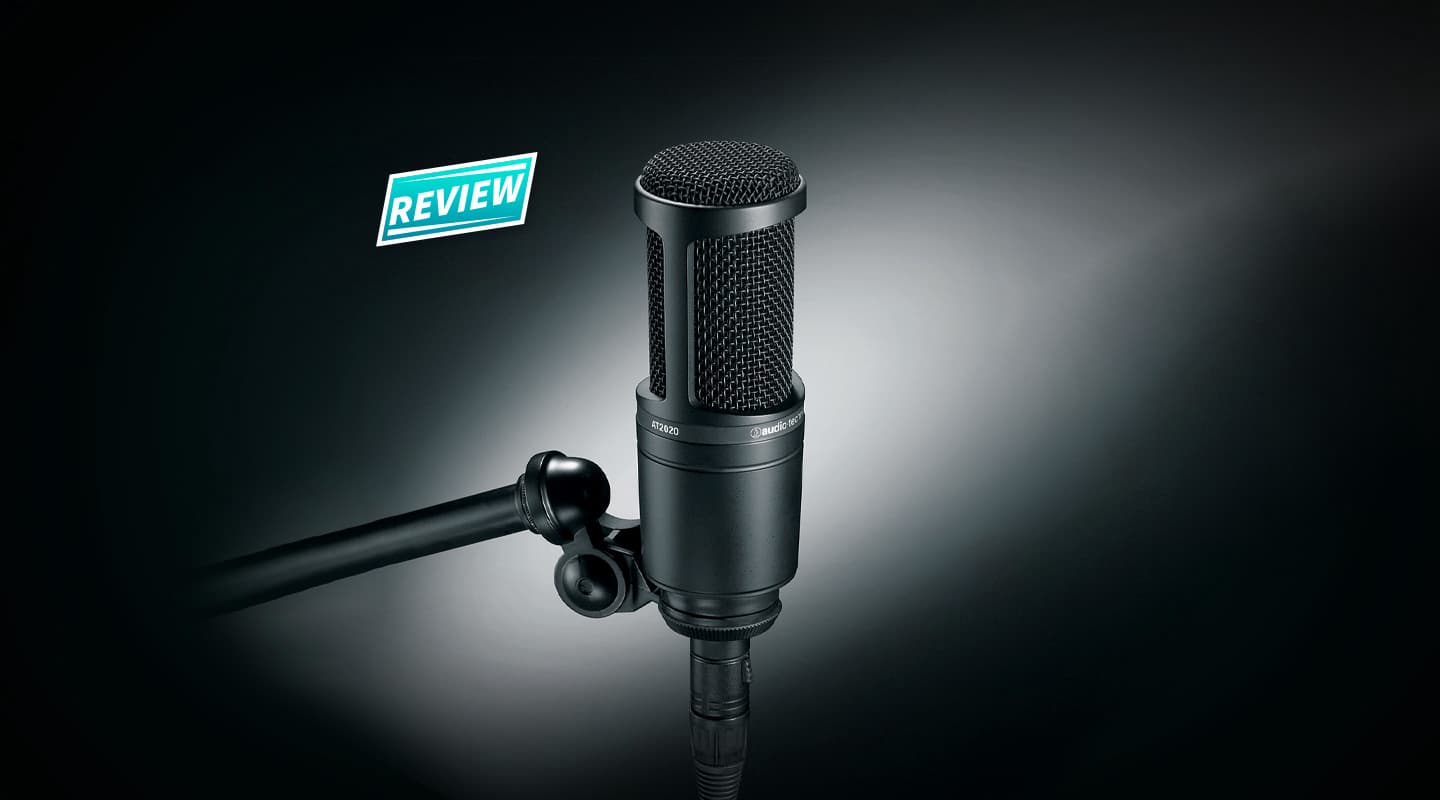
Review: Audio-Technica AT2020
Microphones build a reputation over time and Audio-Technica’s is rock solid. Robin Gist investigates the newest addition to the stable.
Review: Robin Gist
The Audio-Technica AT2020 cardioid condenser microphone is yet another contender in the ever-increasing range of low cost, Chinese-manufactured microphones to reach our shores. It’s a fixed pattern cardioid, side address microphone with no attenuation or frequency roll-off functions. A pencil case-style satchel and adjustable plastic mount are supplied as standard.
The microphone is finished in a subtly mottled, matte black coating that resists fingerprints and handling marks well. I decided against drop testing the 2020 to see how dent-resistant the finish was (for obvious reasons) but it certainly appears, from an external inspection, to be well built and sturdy enough to cope with day-to-day studio life.
I did, however, manage to do several comparative tests on the microphone against a Neumann U87. An unfair comparison you might say, given the massive price difference, but my reasoning was that the differences between my reference U87 and the AT2020 should be obvious – I often use the U87 for vocal recordings and I know its strengths and weakness quite well. Yet despite this apparent David versus Goliath mismatch, the test results were quite intriguing.
I recorded a female vocal, acoustic guitar, shaker and tambourine with both microphones, tracking each signal into my DAW at 24-bit/44.1k. The U87 was suspended in its cradle shockmount whereas the AT2020 was mounted more conventionally onto its supplied metal mount, which screws onto the base, but offers nothing in the way of acoustic isolation from the stand. Audio-Technica makes its own, which retails for $135 (almost the cost of the mic itself). Alternatively, generic shockmounts can be bought for around $100… either way I recommend you use a shockmount on condensers wherever possible to minimise the acoustic knocks that commonly occur around any microphone, typically through the floor. Factor this purchase into your budget if you’re considering buying this or any other condenser microphone for the purpose of recording main vocals etc. Another tip is to mount your ‘popper stopper’ on a separate microphone stand, particularly if you’re not using a shockmount, otherwise a singer’s inclination to put their nose up against the pop shield will transmit a shock directly into the microphone.
The first difference I noticed between the two mics was the output levels. The output of the AT2020 was considerably higher than the U87 as is true of most of the newer microphones available today and I had to gain-up the U87 accordingly. As an aside, the specs say that the AT2020 can handle 144dB SPL, 1kHz @ 1% THD, which is fairly loud in anyone’s book, making it suitable for recording guitar amps, brass instruments and other loud things (although I never got the chance to test this aspect myself).
On playback, the singer preferred her vocals recorded by the U87 as she felt it had more body and depth in the lower frequencies, which I might add, is a particular quality of her voice. However, when it came to the acoustic guitar recording, I actually preferred the AT2020. There was a brightness and high frequency detail in the Audio-Technica, with less muddiness in the mid to lower frequencies compared to the U87. The percussion recordings also provided mixed results, with the shaker sounding more present on the AT2020, and the smoother top end and fuller mid tone sound of the U87 proving the winner on the tambourine. I subsequently recorded another singer with a higher voice just using the AT2020 and was pleased with the result. The vocal cut through the mix with a minimum of EQ and processing, and that’s always a good thing.
So what does this all mean? Well, given the enormous price difference between the two microphones, the AT2020 acquitted itself surprisingly well. For me, it reaffirmed the fact that you need an arsenal of microphones at your disposal in order to produce balanced multitrack recordings each and every time and regardless of the subject matter. Having a variety of choices in both tonal and detail quality allows you to best record your sounds as appropriately and creatively as you want without having the constant imprint of just one microphone on your recordings. With the price of the AT2020 being under $200, it’s a small outlay for another choice in your mic kit and one that would make a worthwhile addition.
















RESPONSES